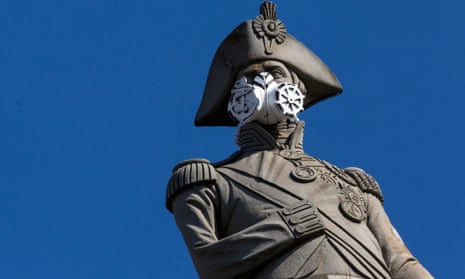An air quality report that was not published by Boris Johnson while he was mayor of London demonstrates that 433 schools in the capital are located in areas that exceed EU limits for nitrogen dioxide pollution – and that four-fifths of those are in deprived areas.
The report, Analysing Air Pollution Exposure in London, said that in 2010, 433 of the city’s 1,777 primary schools were in areas where pollution breached the EU limits for NO2. Of those, 83% were considered deprived schools, with more than 40% of pupils on free school meals.
A spokeswoman for Johnson’s successor, Sadiq Khan, said the new mayor could not understand why the research had not been published when it was completed more than two-and-a-half years ago.
Khan’s spokeswoman said: “This shocking report reveals a snapshot of the true impact that our polluted air has on some of London’s most vulnerable communities. It is difficult to understand why the last mayoralty decided to cover it up and not fully release it in 2013 – they clearly didn’t want Londoners to know the dire state of pollution in the capital.
“The mayor is fully committed to cleaning up our air and protecting Londoners’ health and is shocked to learn that important scientific evidence like this have been locked and ignored at City Hall.”
The mayor now plans to officially publish the report.
Khan has been keen to politicise the issue of air quality in London. In the first week after his election he said Johnson had turned the city into a “laughing stock” on air pollution by being too slow to act on the issue, and said he would be expanding the size of the former mayor’s planned clean air zone to the north and south circular roads.
“This latest revelation is the worst of all,” said Simon Birkett, founder and director of Clean Air in London. “Sadiq Khan is coming to London’s rescue in the nick of time. We need a clean air revolution.”
The research was commissioned by the Greater London authority in early 2013 from the independent consultancy Aether, and completed in September of the same year. Aether has told the Guardian that it was never published.
Of the 1,344 schools located in areas below the pollution limit, less than a fifth were in deprived areas.
Although these inequalities were forecast to come down by 2020, the study’s authors, Katie King and Sean Healy, wrote that there was “still a clear disparity between deprived and non-deprived schools”.
Explaining the reason why that was the case, King and Healy wrote: “A possible explanation for the general trend may be the link between lower house prices, and hence poorer households, and proximity to main roads such as the M4, inner ring roads and radial roads. Roads are a very significant source of NO2 emissions in London.”
Their data also showed that in 2010, Londoners living in the city’s most deprived areas, including the eastern boroughs of Newham, Hackney and Tower Hamlets, were on average more exposed to poor air quality than those in more affluent areas.
In half of the most deprived 10% of areas of London the air was in breach of EU limits on NO2, compared with 1% of in the richest 10% of areas.
The study estimated that nearly half a million under-19s lived in areas that breached NO2 limits. A further 1.3 million under-19s lived in close proximity to those areas with dirty air.
Nitrogen dioxide is a toxic gas produced by diesel vehicles that is linked to respiratory problems. Its levels are increasingly in focus after Volkswagen was found by US authorities to have cheated emissions lab tests.
Subsequent research in the UK and elsewhere has also confirmed that a wide range of cars on the road emit more nitrogen dioxide than suggested by lab tests, meaning that pollution levels in or near major roads are higher than had been hoped.
More than 9,000 people a year in the capital die early from illegal levels of NO2. London has been in breach of the EU NO2 limits since 2010 and is not expected to meet them until 2025. In January, parts of London breached annual limits within a week of the year beginning.

Comments (…)
Sign in or create your Guardian account to join the discussion